Masalah Umum dan Solusi dalam Produksi Batu Bara Arang
Dalam industri pengolahan arang, briket arang yang diproduksi secara mekanis banyak digunakan untuk barbekyu, pemanasan, dan aplikasi bahan bakar industri karena pembakaran lengkap, bentuk seragam, dan nilai kalorinya yang tinggi.
Namun, banyak pelanggan sering menghadapi berbagai masalah teknis saat mengoperasikan lini produksi briket arang, seperti pembentukan tidak stabil, kandungan air terlalu tinggi, atau karbonisasi tidak selesai.
Artikel ini akan menganalisis masalah umum dan solusi terkait dari sudut pandang konfigurasi peralatan dan proses produksi.
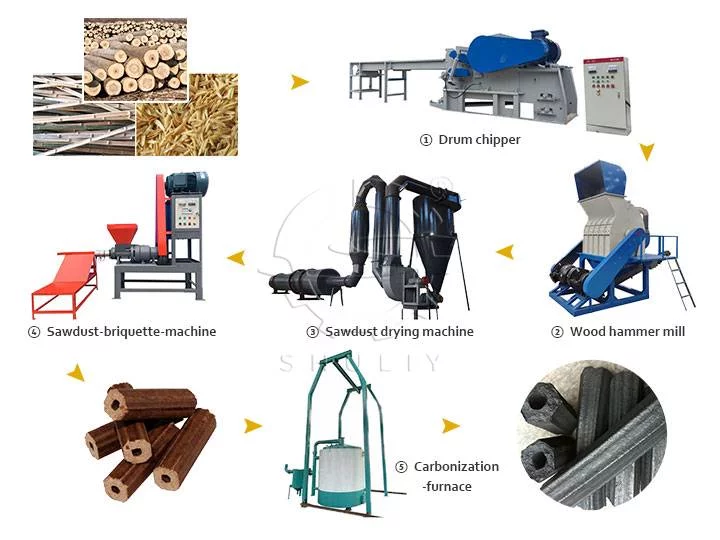
Peralatan utama Lini Produksi Briket Arang
Sebelum menganalisis masalah, mari kita tinjau secara singkat komposisi dan alur proses seluruh lini produksi:
Penggiling kayu: menggiling cabang, serpihan kayu, dan serutan menjadi partikel halus.
Pengering tunggal: mengeluarkan kelembapan berlebih dari bahan baku, memastikan kadar air 10%-12%.
Pnew press: menekan bahan baku kering menjadi briket berbentuk batang di bawah suhu dan tekanan tinggi.
Furnace karbonisasi: karbonisasi briket yang dibentuk dalam lingkungan tanpa oksigen.
Mesin pembungkus bantal: membungkus briket arang jadi secara otomatis untuk memudahkan penjualan dan pengangkutan.
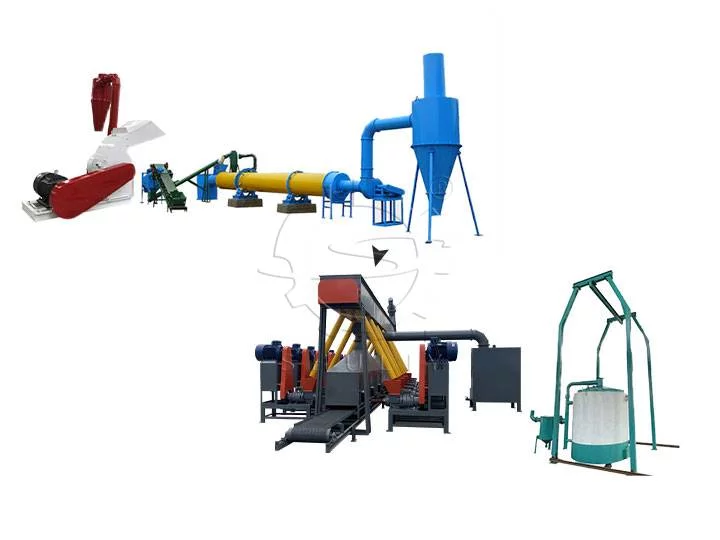
Formasi pellet yang buruk
Manifestasi masalah:
Pelet arang menunjukkan retak, rapuh, dan pembentukan buruk.
Penyebab utama:
- Kelembapan bahan baku yang berlebihan (melebihi 15%)
- Ukuran partikel tidak seragam; bahan baku terlalu kasar
- Suhu motor press atau cetakan tidak cukup tinggi
Solusi:
- Kontrol kandungan kelembapan bahan baku setelah pengeringan antara 10–12%
- Periksa layar pemecah agar ukuran partikel output konsisten
- Sesuaikan suhu elemen pemanas mesin briket menjadi 280–300°C
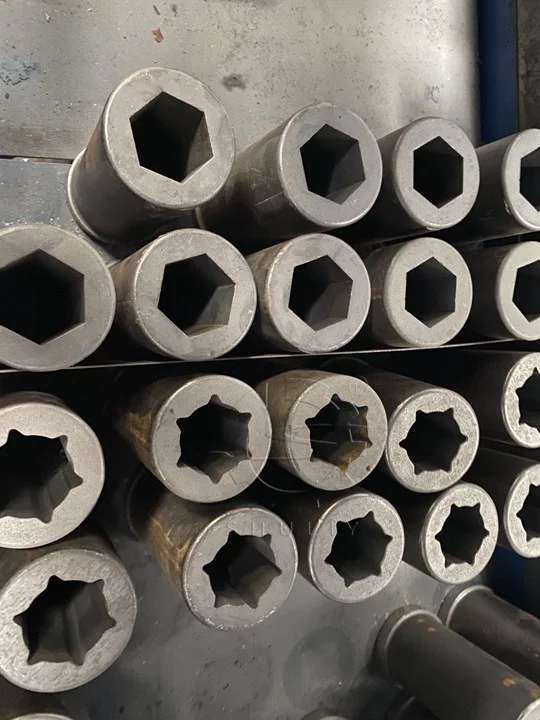
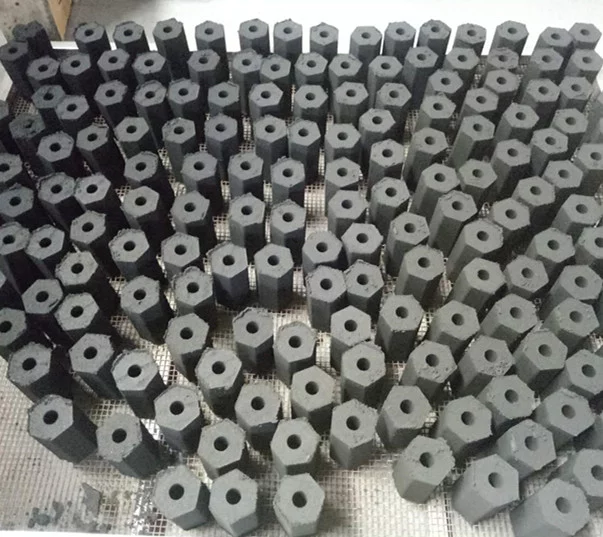
Karbonisasi arang batang tidak lengkap
Manifestasi masalah:
Batangan arang terlihat abu-abu atau memiliki permukaan terbakar sementara bagian dalamnya belum terkarbonisasi
Penyebab utama:
Suhu furnace tidak cukup atau pemanasan tidak merata
Penumpukan batang terlalu rapat menghalangi aliran udara
Durasi karbonisasi tidak memadai.
Solusi:
- Pastikan suhu karbonisasi tetap stabil antara 600–800°C
- Atur batang arang dengan benar di dalam tungku untuk menjaga sirkulasi udara
- Perpanjang waktu karbonisasi secara tepat untuk memastikan karbonisasi inti yang menyeluruh
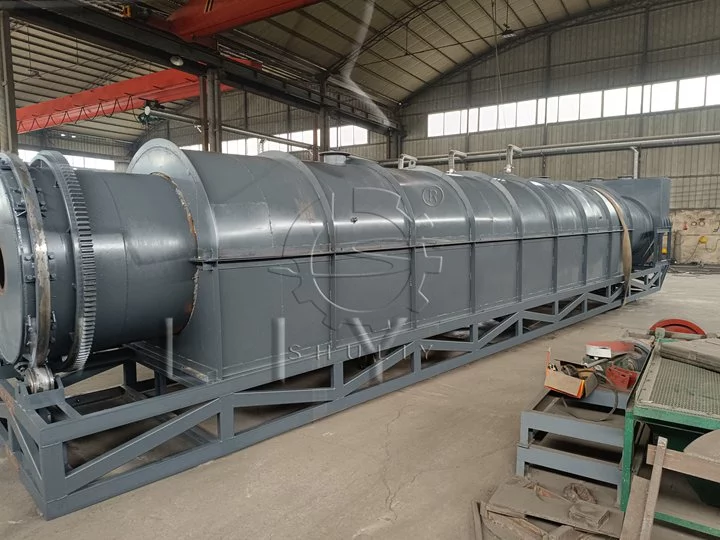
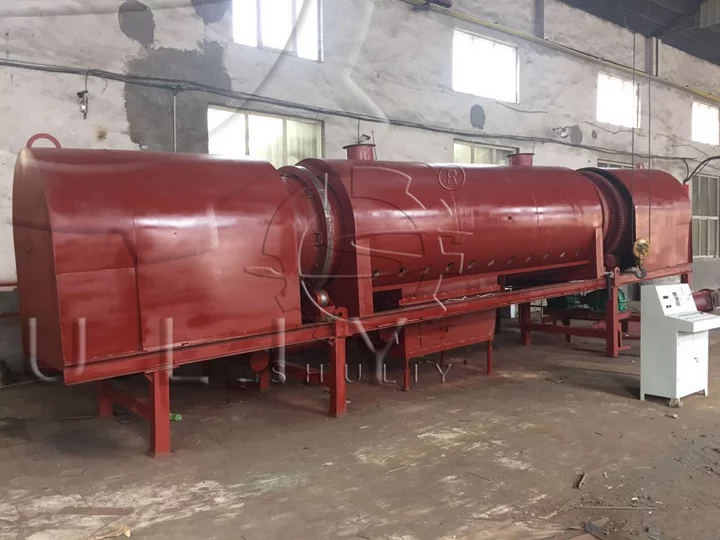

Kadar air pada batang arang terlalu tinggi
Manifestasi masalah:
Batangan arang mengeluarkan asap saat pembakaran dan menyala perlahan.
Penyebab utama:
- Kadar pengeringan bahan baku tidak cukup
- Suhu atau aliran udara di pengering tidak cukup
- Lingkungan penyimpanan lembap setelah karbonisasi
Solusi:
- Sesuaikan suhu dan laju umpan drum pengering
- Gunakan sistem pengering tertutup untuk mencegah sirkulasi kembali kelembapan
- Simpan produk jadi di gudang kering untuk mencegah penyerapan kelembapan dan lembap
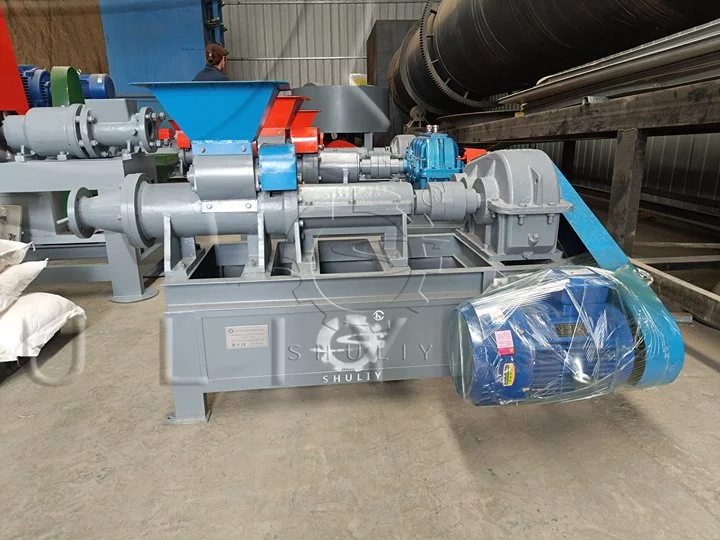
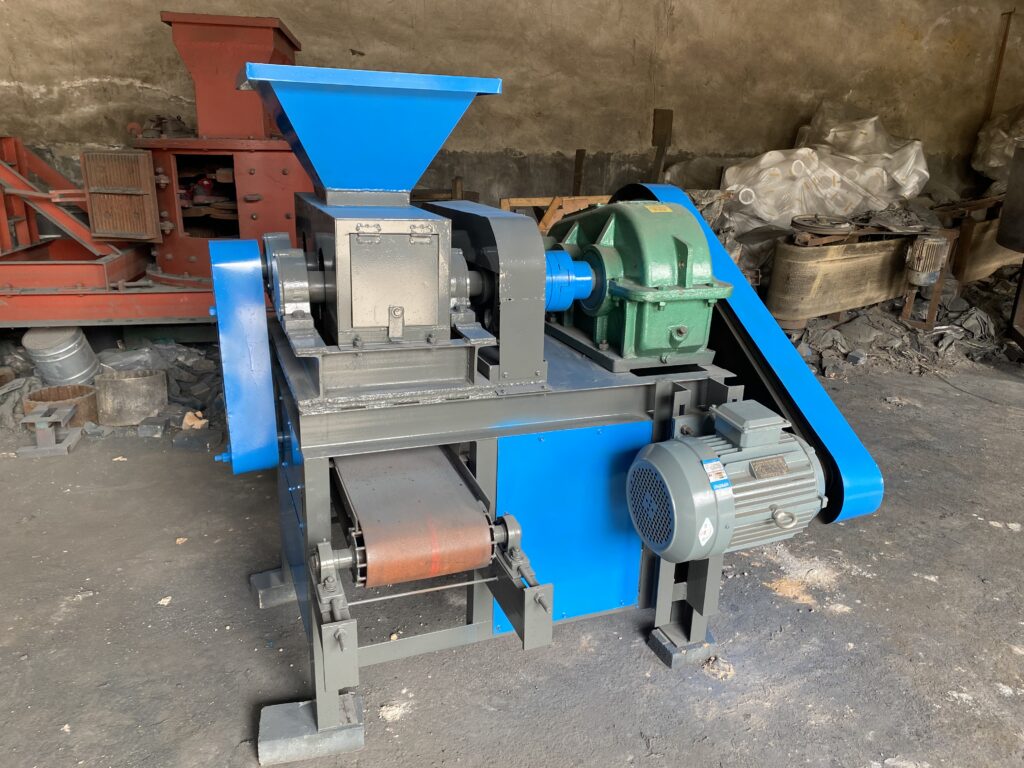
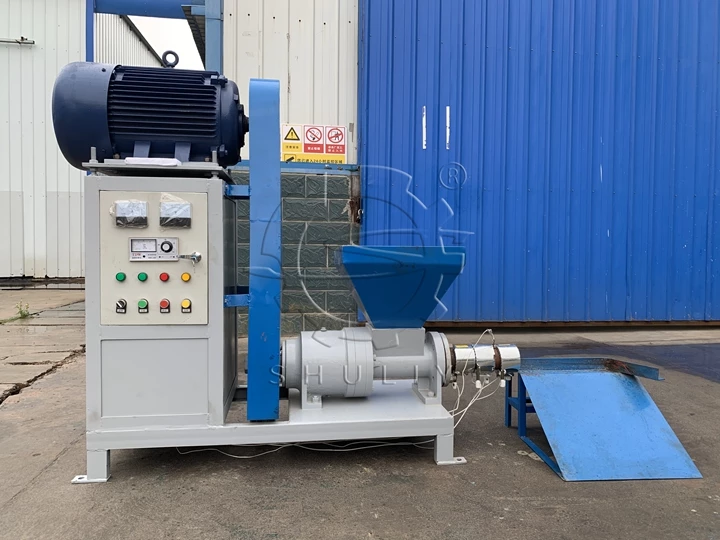
Output rendah atau tersangkut mesin
Gejala:
Kapasitas produksi briket menurun, dengan pembuangan material yang buruk.
Penyebab utama:
- Bahan baku mengandung kotoran (batu, logam, kulit keras)
- Keausan berat pada cetakan
- Penumpukan karbon atau sumbatan pada sekrup umpan.
Solusi:
- Pra-saring bahan untuk menghilangkan kotoran dan memastikan kemurnian
- Periksa secara teratur dan ganti cetakan
- Bersihkan saluran sekrup mesin briket untuk menjaga aliran yang lancar
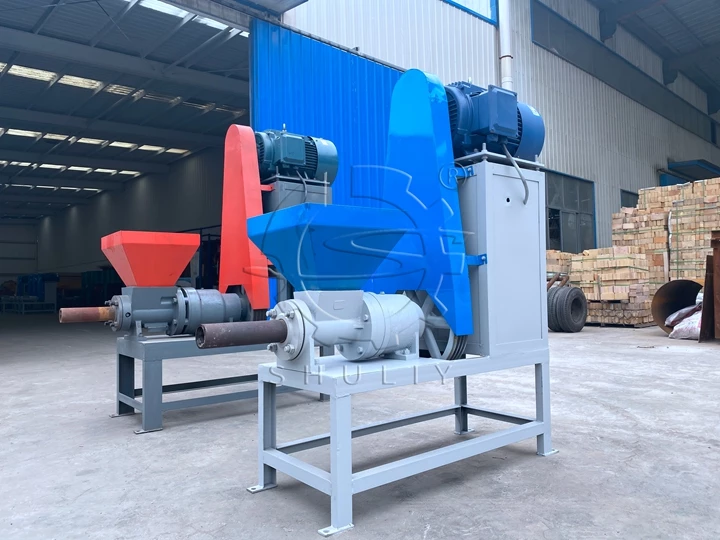
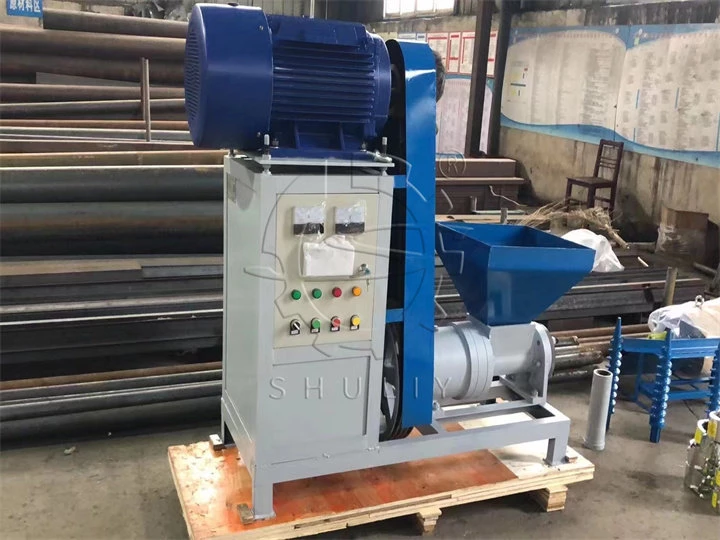
Efisiensi pembakaran arang yang rendah pada stik arang
Manifestasi masalah:
Batangan arang jadi memiliki durasi menyala pendek dan kandungan abu yang tinggi.
Penyebab utama:
- Rasio bahan baku kayu rendah (proporsi tanaman liar dan serpihan bambu yang tinggi)
- Suhu atau durasi karbonisasi tidak cukup
- Kepadatan briket arang terlalu rendah
Solusi:
- Pilih serpihan kayu berdensitas tinggi dan kayu keras sebagai bahan baku utama
- Sesuaikan parameter karbonisasi untuk memastikan karbonisasi lengkap
- Tingkatkan kerapatan kompresi pada mesin press briket
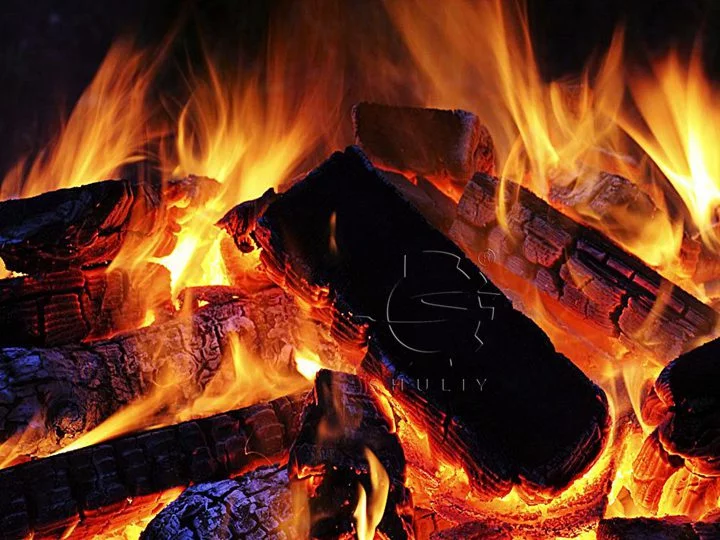
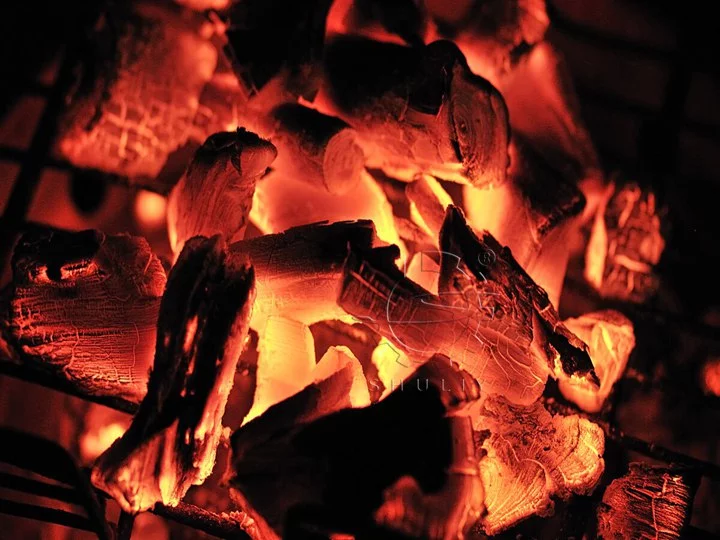
Keuntungan dari lini produksi briket arang otomatis Shuliy
Lini produksi briket arang modern tidak hanya menyelesaikan masalah ketidakstabilan pembuatan arang secara manual tradisional tetapi juga memberikan manfaat ekonomi yang signifikan:
Operasi otomatis sepenuhnya: hanya 1–2 operator yang diperlukan untuk mengelola seluruh lini produksi
Output tinggi dengan konsumsi energi rendah: efisiensi kerja kontinu yang tinggi, dengan konsumsi energi 30% lebih rendah dari proses tradisional
Sistem pemantauan pintar: kontrol suhu dan tekanan otomatis meminimalkan kesalahan manusia
Keberagaman kompatibilitas bahan baku: memproses serpihan kayu, sekam padi, serpihan bambu, dan cangkang buah
Konsistensi produk yang superior: pelet kepadatan tinggi dengan kinerja pembakaran yang stabil, ideal untuk pasar ekspor
Konsistensi: pelet kepadatan tinggi dengan kinerja pembakaran yang stabil, ideal untuk pasar ekspor
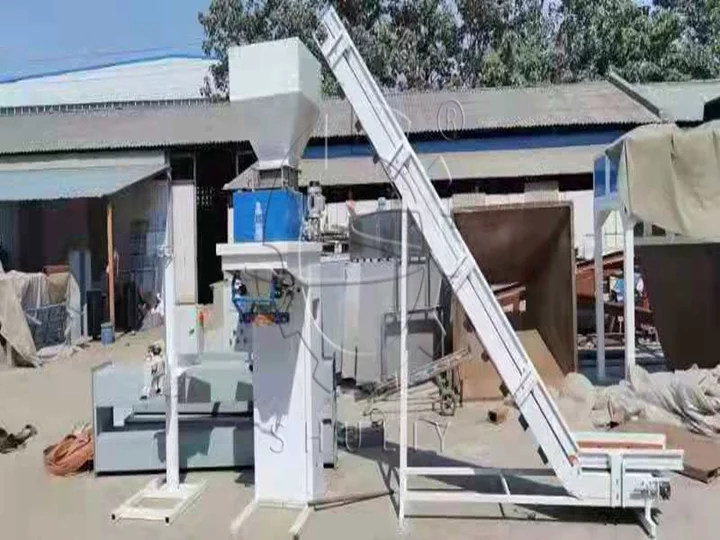
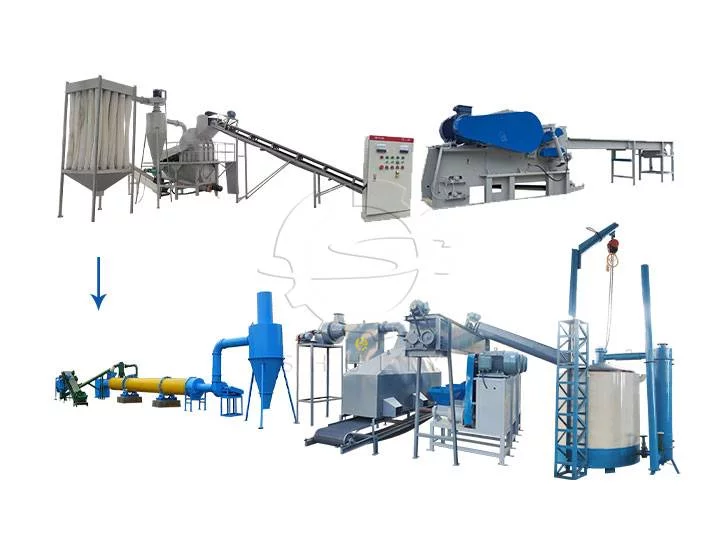
Kesimpulan
Meskipun produksi briket arang terlihat sederhana, secara konsisten menghasilkan briket berkualitas tinggi memerlukan kendali ilmiah atas bahan baku, suhu, dan kondisi peralatan.
Dengan mengkonfigurasi mesin pemotong kayu, pengering, press briket, dan tungku karbonisasi secara optimal, Anda dapat secara signifikan meningkatkan kualitas produk sambil meraih pengembalian ekonomi yang lebih besar.
Jika Anda ingin mendirikan lini produksi briket arang sendiri, tim insinyur kami dapat menyediakan solusi desain dan instalasi yang komprehensif.
